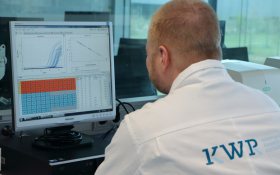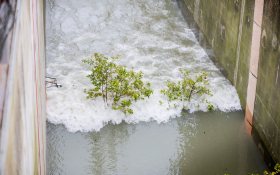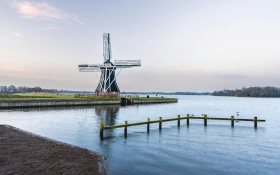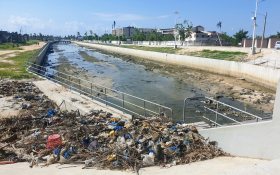Nijhuis designs Bioctor treatment plant for cider producer Cornish Orchards, UK
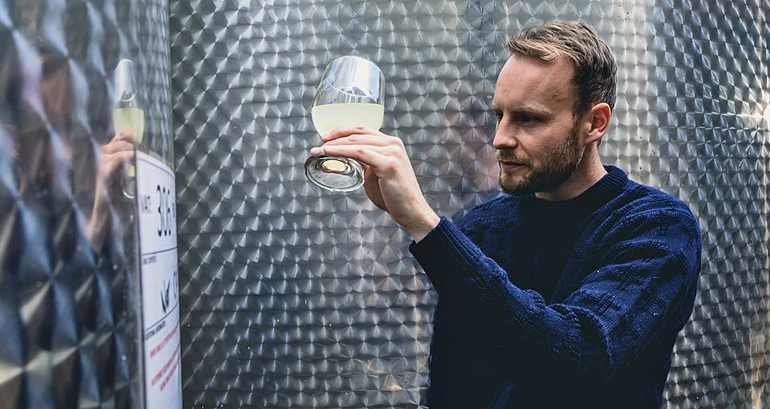 Nijhuis industries designed a Bioctor sequence batch reactor for the treatment of the waste water of cider producer Cornish Orchards, UK.
Nijhuis industries designed a Bioctor sequence batch reactor for the treatment of the waste water of cider producer Cornish Orchards, UK.
The Bioctor contributes to Cornish Orchards’ aim to reduce the volume of its waste water. The renewed waste water treatment will allow the cider producer to commission a treatment plant based upon smart and sustainable principles, all realised on small footprint.
Nijhuis Industries designed the new Bioctor installation, as part of a turnkey design and build solution.
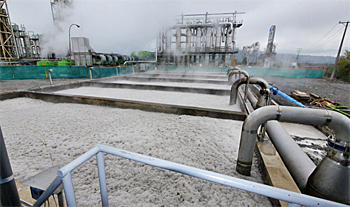 Nijhuis’ Bioctor technology is based on a moving bed bioreactor (MBBR) using carrier material which results in a more effective growth of bacteria, allowing a compacter aeration.
Nijhuis’ Bioctor technology is based on a moving bed bioreactor (MBBR) using carrier material which results in a more effective growth of bacteria, allowing a compacter aeration.
Two screens
The design prises of the pumping of effluent from an existing wet well to a rotating screen with scraper to remove bottle caps, labels and other large obstructions. This feeds into a cloth screen incorporating polymer dosing to remove high levels of total suspended solids such as pumice from apple pressing. The screened effluent is then introduced to a Nijhuis Bioctor-SBR tank via a selector tank.
Sequence batch reactor
The Bioctor process is a single batch bio treater comprising a 465m2 tank with floating aerator and decanting arm. The biomass within the tank converts organic matter to water, carbon dioxide and new biomass with the aid of oxygen induced by the aerator.
Oxygen levels are monitored and controlled by an in-line probe.
The excess sludge from the Bioctor-SBR tank is fed back to the cloth screen to thicken the sludge and thereafter to a sludge storage tank.
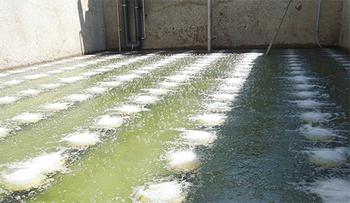 Aerators in the MBBR-tank.
Aerators in the MBBR-tank.
Reduced visual impact
The tank and associated equipment, pumps and transfer tanks are to be accommodated within a cast in-situ reinforced concrete bunded area.
This reduced the visual impact of the plant which is set within a 16th century farm. The difference in level between the lower bunded area and the upper slab allowed gravitational flow from the screens situated at the upper level.
The whole process is controlled by the Nijhuis PLC electrical control panel housed in a bespoke control room, which also provides housing for chemical/polymer dosing and sampling facilities.
Buffering capacity
Treated effluent is pumped 75m up to the client’s existing old treatment lagoons. These lagoons were adapted to provide buffering capacity of batched effluent by the inclusion of a hydro brake to limit flows to the maximum discharge consent specified by the Environment Agency. Flows from the hydro brake are fed via a 200m sewer to discharge into the local stream.
This news item was originally published on the website of Nijhuis Industries.
(Photos: Cornish Orchards, Nijhuis Industries)
Read also on this website
● IFAT 2018: How Nijhuis links tasteful mint to waste water, 18 May 2018
● Nijhuis Industries all geared up for industrial waste water treatment plant Port Said, Egypt, 2 May 2018
● Nijhuis to build botanical garden waste water treatment plant in Russia, 21 December 2017|
● Expertise: Water technology
● Country: United Kingdom
More information
Nijhuis Industries
Doetinchem, the Netherlands
+31 314 749 000
www.nijhuisindustries.com
